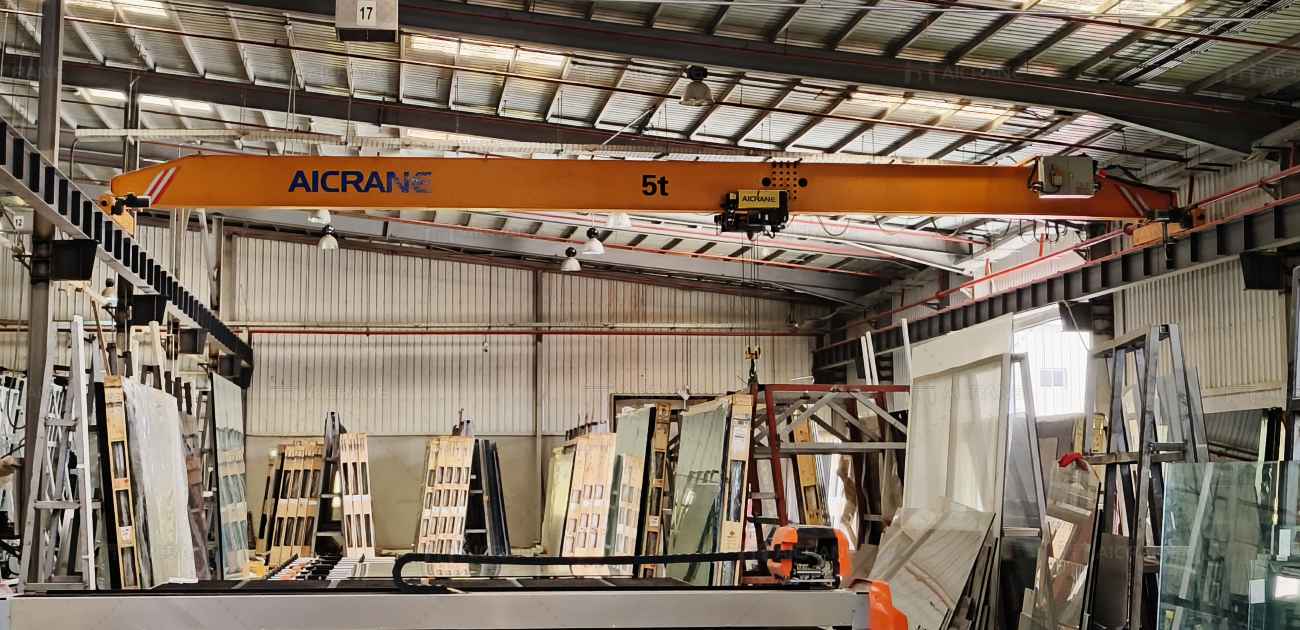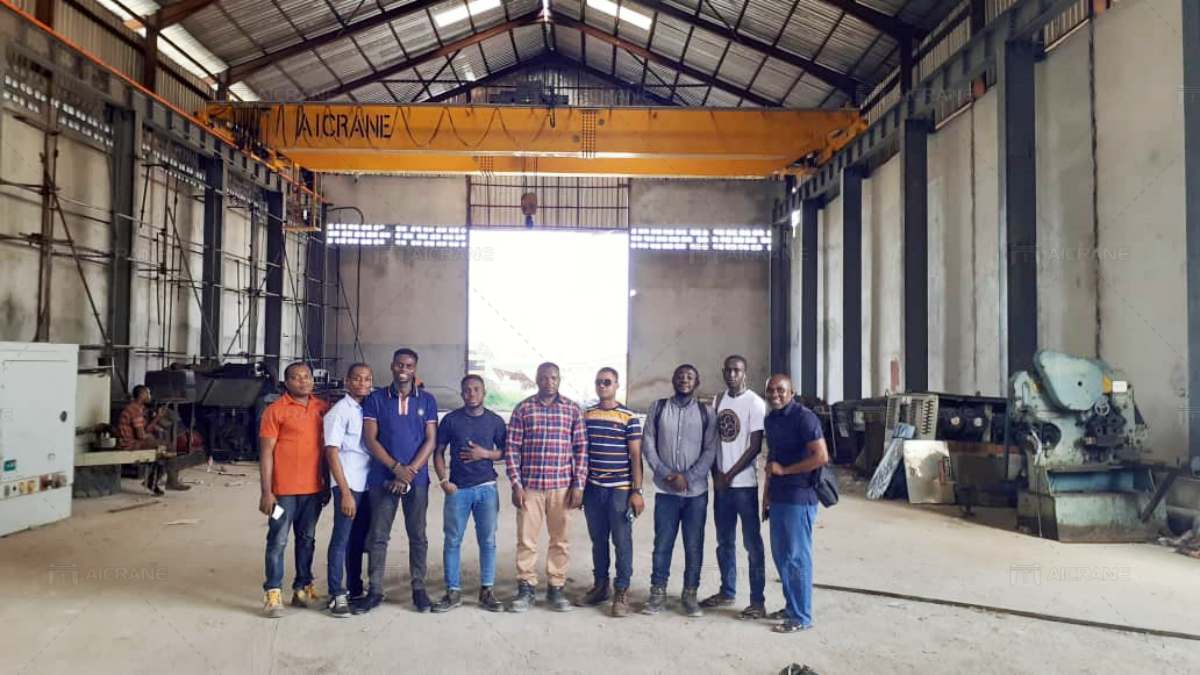As industries across the globe embrace Industry 4.0, the fourth industrial revolution, technology is reshaping how businesses operate. This transformation is driven by a blend of smart technologies, including automation, artificial intelligence (AI), the Internet of Things (IoT), and big data analytics. In manufacturing and industrial sectors, one area witnessing a dramatic shift is material handling, where overhead cranes play a crucial role in shop operations.
Shop overhead cranes, integral for moving heavy materials efficiently, have benefited greatly from the rise of Industry 4.0. From enhanced automation to real-time data monitoring, the infusion of advanced technology has revolutionized how these shop overhead cranes function, improving both productivity and safety.

Automation and Smart Control Systems
One of the most significant impacts of Industry 4.0 on shop overhead cranes is the integration of automation and smart control systems. Traditionally, crane operations required skilled operators to manually handle loads, navigate tight spaces, and ensure precise movements. Today, with the adoption of automated systems, cranes can perform these tasks with greater accuracy, consistency, and speed.
- Programmable Operations: Automated cranes can follow pre-programmed routes and operations, reducing manual intervention. For instance, in a production facility, an overhead bridge crane can be programmed to pick up raw materials from one location and deliver them to a machining center, all while avoiding obstacles and optimizing its path for efficiency.
- Precision Load Handling: Advanced control systems allow cranes to manage heavy loads with millimeter precision. This is particularly valuable in industries like automotive or aerospace manufacturing, where delicate components need to be handled without causing damage.
- Operator Assistance: While full automation may not be feasible in all cases, semi-automated cranes offer operator assistance technologies like anti-sway systems and load stabilizers. These features reduce the skill required to operate the crane and improve load control, minimizing the risk of accidents and damage.
IoT Integration for Real-Time Monitoring
The Internet of Things (IoT) has connected cranes to broader industrial networks, allowing for real-time monitoring of crane operations. This connectivity enables shop overhead cranes to become part of the larger, smart factory ecosystem.
- Predictive Maintenance: One of the standout benefits of IoT integration is predictive maintenance. Sensors installed on the crane continuously monitor critical components such as motors, brakes, and load hooks. These sensors collect data on performance metrics like temperature, vibration, and usage cycles. When a component shows signs of wear or irregular performance, the system can alert maintenance teams to perform repairs before a breakdown occurs. This prevents unexpected downtime and extends the lifespan of the equipment.
- Real-Time Load Data: IoT also provides real-time information on load weight, positioning, and handling. This is especially beneficial in environments where material handling must be precise, such as in manufacturing, where every kilogram counts. Operators can monitor the load through a digital interface, ensuring they stay within safe operating limits.
- Energy Efficiency: IoT-enabled systems can track energy consumption and provide insights into how to optimize crane usage. By analyzing usage patterns, facility managers can reduce energy waste and schedule operations during off-peak energy times, resulting in significant cost savings. If you want to know more about different eot cranes, you can just check this page as you need https://aicranemachine.com/overhead-crane/eot-crane/.

Enhanced Safety Features
Safety is always a top priority in industrial settings, and technological advancements have vastly improved the safety of shop overhead cranes. Industry 4.0 technologies provide numerous safety features designed to protect both workers and the equipment.
- Anti-Collision Systems: One of the major safety advancements is the implementation of anti-collision systems. Using radar or laser sensors, these systems detect nearby obstacles and automatically adjust the crane’s path to avoid collisions with other equipment or structures. This feature is crucial in crowded manufacturing environments where multiple machines operate simultaneously.
- Geofencing and Restricted Areas: Geofencing technology allows operators to define restricted zones within a shop floor. The crane is programmed not to enter these areas, ensuring the safety of workers and preventing unintended interactions with other equipment. This is particularly useful in hazardous areas where workers may be performing sensitive tasks.
- Load Monitoring and Safety Alerts: Real-time load monitoring ensures that cranes operate within their safe load limits. If a load exceeds the crane’s capacity, the system can issue warnings or prevent the crane from lifting the load, preventing accidents caused by overloading.
Data Analytics and Performance Optimization
Big data analytics, another cornerstone of Industry 4.0, allows for the collection and analysis of vast amounts of operational data from shop overhead cranes. This data can be used to optimize crane performance, streamline operations, and reduce operational costs.
- Crane Utilization Metrics: Data analytics provide insights into how often cranes are being used, their idle time, and their peak operating periods. Facility managers can use this information to optimize crane scheduling, ensuring that no equipment is underutilized or overworked.
- Cycle Time Reduction: By analyzing data on movement patterns, load times, and positioning, companies can reduce cycle times for material handling tasks. Shorter cycle times mean that products move faster through the production process, improving overall productivity.
- Continuous Improvement: The data collected by smart cranes can be used for continuous improvement initiatives. By identifying inefficiencies in crane operations, companies can make incremental changes to improve workflow and reduce costs over time.
Since Aicrane has been in crane business for many years and has cooperated with many customers by providing reliable silutions for them, Aicrane company is committed to crane technology innovation and focusing on quality and reliable crane solutions as always.
Future Potential: AI and Machine Learning
While automation, IoT, and data analytics are already making a significant impact, the future of shop overhead cranes will likely see the integration of AI and machine learning. These technologies will further enhance the capabilities of cranes by allowing them to learn from past operations, improve decision-making, and even predict future operational needs.
- Adaptive Algorithms: AI can help cranes adjust to dynamic environments. For example, if a production line changes or if new machinery is installed, AI-enabled cranes could learn new routes and handling procedures without the need for manual reprogramming.
- Advanced Predictive Analytics: Machine learning algorithms can predict not just maintenance needs but also operational bottlenecks, allowing facility managers to address potential issues before they impact production.
Industry 4.0 is revolutionizing the way shop overhead cranes operate, bringing unprecedented levels of efficiency, safety, and data-driven decision-making to material handling. Automation, IoT integration, enhanced safety features, and data analytics are just the beginning of how technology is reshaping crane operations. As AI and machine learning continue to evolve, shop overhead cranes will become even smarter, further enhancing their role in the future of industrial operations.
Embracing these technological advancements is no longer optional but essential for businesses looking to stay competitive in a rapidly evolving industrial landscape.